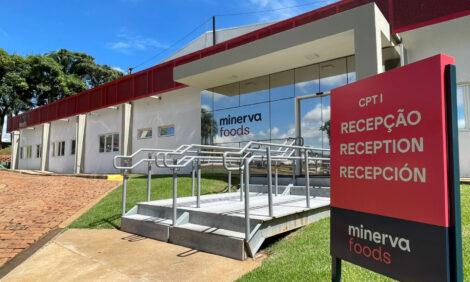



FDA Urged to Ban Feeding Chicken Litter to Cattle
US - Food and consumer groups say the practice increases the risk of cattle becoming infected with bovine spongiform encephalopathy (BSE). A beef industry trade group say a ban is not needed.A fight is brewing over the practice of feeding chicken faeces and other poultry farm waste to cattle, reports Los Angeles Times.
A coalition of food and consumer groups that includes Consumers Union and the Center for Science in the Public Interest has asked the Food and Drug Administration to ban the practice. McDonald's Corp., the nation's largest restaurant user of beef, also wants the FDA to prohibit the feeding of so-called poultry litter to cattle.
Members of the coalition are threatening to file a lawsuit or to push for federal legislation establishing such a ban if the FDA does not act to do so in the coming months.
Farmers feed one to two million tons of poultry litter to their cattle annually, according to FDA estimates.
Using the litter – which includes faeces, spilled chicken feed, feathers and poultry farm detritus – increases the risk of cows becoming infected with bovine spongiform encephalopathy, or mad cow disease, said Michael Hansen, a senior scientist at Consumers Union.
That is because the spilled chicken feed and the faeces contain tissue from ruminants – cows and sheep, among other mammals. The disease is transmitted through feeding ruminant remains to cattle.
"It takes a very small quantity of ruminant protein, even just one milligram, to cause an infection," said Steve Roach, public health programme director with Food Animal Concerns Trust, a Chicago-based animal welfare group that is part of the coalition.
Although it is rare, people can contract a fatal form of the disease by eating meat from cows with BSE.
LA Times reports that the National Cattlemen's Beef Association, the beef industry's main trade group, said the ban was not needed and that several FDA reviews had determined that the chance of cattle becoming infected with mad cow disease from eating poultry litter was remote.
"Science does not justify the ban, and the FDA has looked at this now many times," said Elizabeth Parker, chief veterinarian for the trade group.
Dr Parker noted that the FDA this year banned the use of certain types of tissue from any form of animal feed, even that eaten by chickens. Those tissues include brain, spinal cord material and other high-risk tissues where the pathogens believed to cause mad cow disease typically are found. The tissue ban greatly reduces chances that prions, implicated in mad cow, can find their way into the food chain, Dr Parker said. She also said the disease was not a threat to public health.
"We have tested 800,000 cattle in recent years and have not found any evidence of BSE circulating in the herd," Dr Parker said.
But others remain concerned.
"I still think you need to totally restrict using any ruminant protein in feed that gets back to ruminants," said Linda Detwiler, a food safety consultant and former US Department of Agriculture veterinarian.
Prohibiting high-risk tissues as a feed source makes the chances of transmitting mad cow disease through poultry litter low but does not remove all risk, Ms Detwiler said.
The practice also makes McDonald's, one of the nation's biggest beef purchasers, nervous. "We do not condone the feeding of poultry litter to cattle," it said in a statement.
The issue has kicked around since the first US case of mad cow disease was discovered almost six years ago in an animal imported from Canada. There have been two known indigenous cases of mad cow infections in domestic cattle since then, but both were in animals born before the enactment of stricter regulation of feed.
Generally, the FDA has left the decision on whether to feed cattle poultry litter up to state regulators. California allows the practice with one exception: poultry litter is banned in feed for lactating dairy cows.
In 2004, the FDA announced its intention to prohibit the use of poultry litter in cattle feed but after reviewing the proposed ban, it decided against it. The agency said its rules prohibiting the use of high-risk tissues in all animal feed were sufficient to keep mad cow pathogens from reaching poultry feed. The FDA also said there was little risk to human or cattle health from the other components of poultry litter.
"With respect to pathogenic microorganisms, drug residues and contaminants in poultry litter, FDA is not aware of any data showing that the use of poultry litter in cattle feed is posing human or animal health risks that warrant restrictions on its use," the agency said.
But Mr Hansen, the Consumers Union scientist, said that besides the mad cow risk, the feed can contain disease-causing bacteria, antibiotics and even foreign objects such as dead rodents, rocks, nails and glass. Such hazards are not eliminated by any processing of the feed that might occur, he said.
Dean Cliver, professor emeritus of food safety at University of California Davis, said that feeding farm animals faeces may sound gross, but it goes back to the dawn of animal agriculture, .
"In the old days when people had mixed farms, what came out the back end of the cows was eaten by pigs, and what came out the end of pigs was eaten by chickens. That was the natural way of farming," he told LA Times. "Anything that hit the ground was fair game."
TheCattleSite News Desk


